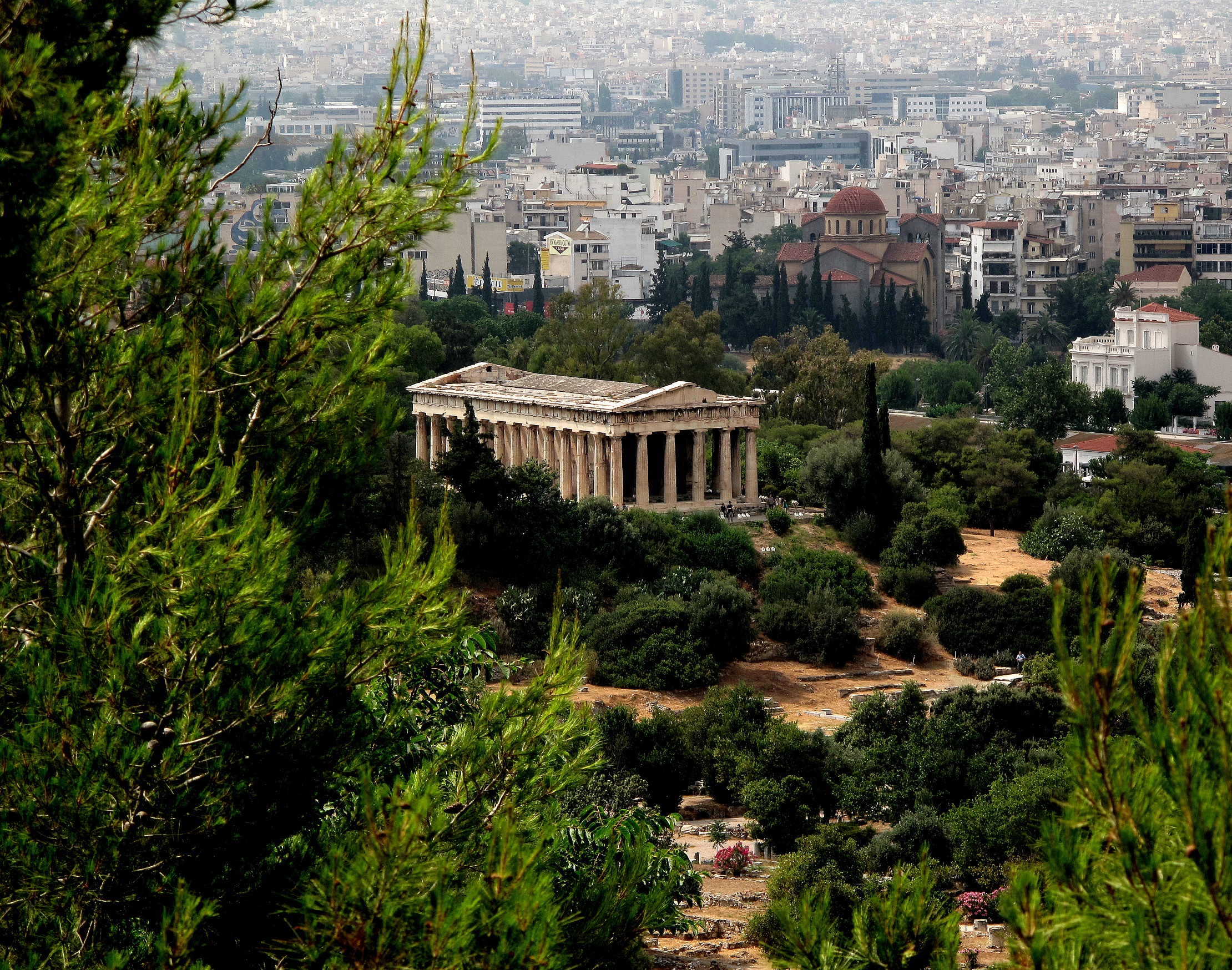From world-famous architecture to legendary ruins, Athens is one of the most exciting cities a traveller can explore.
Each year, millions of visitors come to explore the city's rich history. While most of those people are admiring the Parthenon, there is so much more to see. Tucked away in corners or along sparse-travelled paths are some of Athens oft-missed historical sites, but treasures all the same. Those who want to find them need only to make the conscious decision to part ways with the tourist crowd.
Philopappos
 Dennis Jarvis via Flickr.com/archer10/2215072051 (CC by 2.0)
Dennis Jarvis via Flickr.com/archer10/2215072051 (CC by 2.0)
Athens is a city of many hills, but tourists generally focus on the hill that bears the weight of the famous Acropolis. However, just to the southwest of the Acropolis is the lesser-known hill of Philopappos, otherwise known as the Hill of the Muses.
Atop Philopappos is a burial monument built by the Athenians for Gaius Julius Antiocuis Philopappos, the grandson of the last king of Commagene. He also happened to be the eminent benefactor of Athens.
Philopappos Monument is a simple marble structure that depicts detailed carvings of the man. Not only is it beautiful, but Philopappos is one of the few sprawling green areas in Athens. Come for the history, but stay for the great city views.
Kerameikos
 dynamosquito via Flickr.com/dynamosquito/5831577355/ (CC by 2.0)
dynamosquito via Flickr.com/dynamosquito/5831577355/ (CC by 2.0)
Originally, Kerameikos was a district inhabited by ancient Athens' potters. It was later re-purposed into a cemetery when the clay became less suitable for the craft.
What makes this site all the more interesting is that it contains the remains of what was an ancient burial ground for the city's most important figures.
Today, visitors can walk what remains of the tombs and visit the museum, taking a trip through ancient Athens by admiring the carvings, murals and artifacts that tell the stories of the deceased.
Agios Eleftherios
 By Wknight94 talk (Own work) CC BY-SA 3.0 via Wikimedia Commons
By Wknight94 talk (Own work) CC BY-SA 3.0 via Wikimedia Commons
Tucked away on Mitropoleos Square in the garden surrounding the Athens Cathedral is a very small, but very old building: the Agios Eleftherios.
At first glance, it looks more like an elegant outer building of the cathedral, but it is in fact, a church in its own right. Built in the twelfth century, the Agios Eleftherios was a Byzantine church and, even though its size suggests otherwise, it was the main church of its day.
Compared to the grandeur of the Athens Cathedral, everything about the Agios Eleftherios is humble. From its decoration inside and out, to the few rows of pews within, it stands testament to the fact that even the smallest places of worship can be some of the most important.
Temple of Hephaestus
 Francisco Anzola via Flickr.com/fran001/4694707578 (CC by 2.0)
Francisco Anzola via Flickr.com/fran001/4694707578 (CC by 2.0)
Hephaestus, the God of Smithing, is one of the most overlooked Gods - even though he forged the weapons of Olympus and had the beautiful Aphrodite as his wife. He may have received few staring roles because he was the only Greek god who was physically imperfect. It seems only befitting that the Temple of Hephaestus be overlooked as well.
The Temple of Hephaestus sits among the Agora in Athens and happens to be one of the best preserved temples. Constructed in the fifth century BC, it seems the craftsmen of Athens took extra care with the temple of their patron god. Moreover, the temple has had a varied history. From 700-1833 it served as a Christian church, which was a contributing factor to its maintenance and upkeep.
Temple of Hephaestus is off the Agora's main thoroughfare and while some visitors will occasionally miss it, it is well worth the visit.
Areiospagos
![By O.Mustafin (Own work) [CC0], via Wikimedia Commons](/media/image/90853_max.jpg) By O.Mustafin (Own work) [CC0], via Wikimedia Commons
By O.Mustafin (Own work) [CC0], via Wikimedia Commons
Areiospagos is yet another one of Athens oft-overlooked hills. This hill, occasionally known as the Hill of Ares or the Hill of Curses, is located northwest of the Acropolis.
Historically, Areiospagos was used as the meeting place for the council of ancient Athens. Originally the council was a group of nobles but it later transformed into a judiciary body that specialized in judging murder cases. Later, the hill served as the site where Paul the Apostle preached when he visited Athens in 54 BC.
There is not much standing on the hill today, but there are ruins of a post-Byzantine three-aisle basilica dedicated to Saint Dionysius the Areopagite on the northeast side. For most visitors, it is a pleasure to walk such historical ground, while for others, it simply provides a unique view of Athens.
More Greece on Canadian Traveller:


